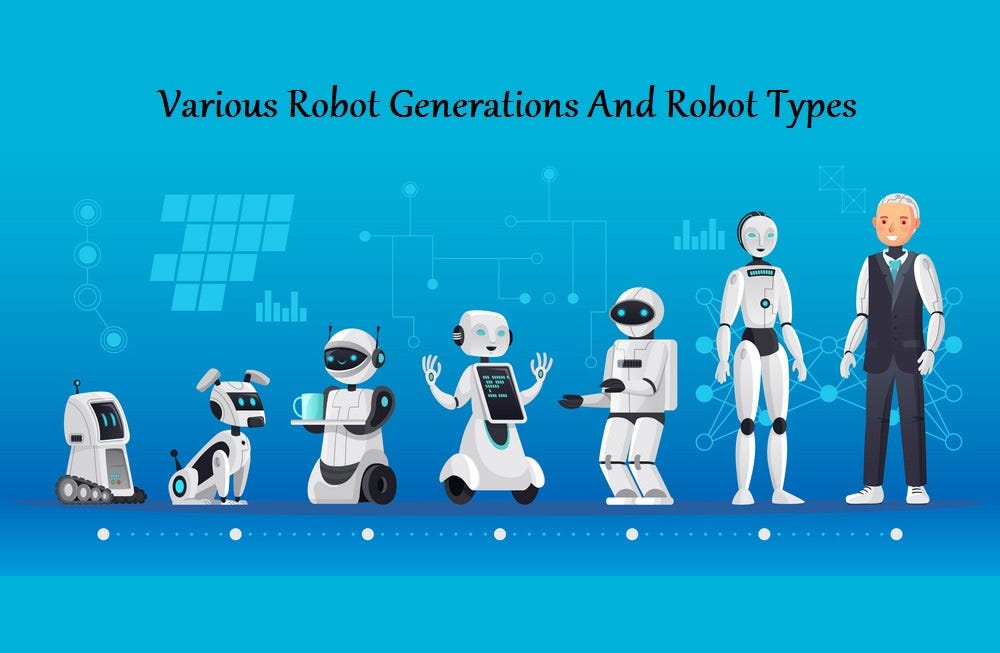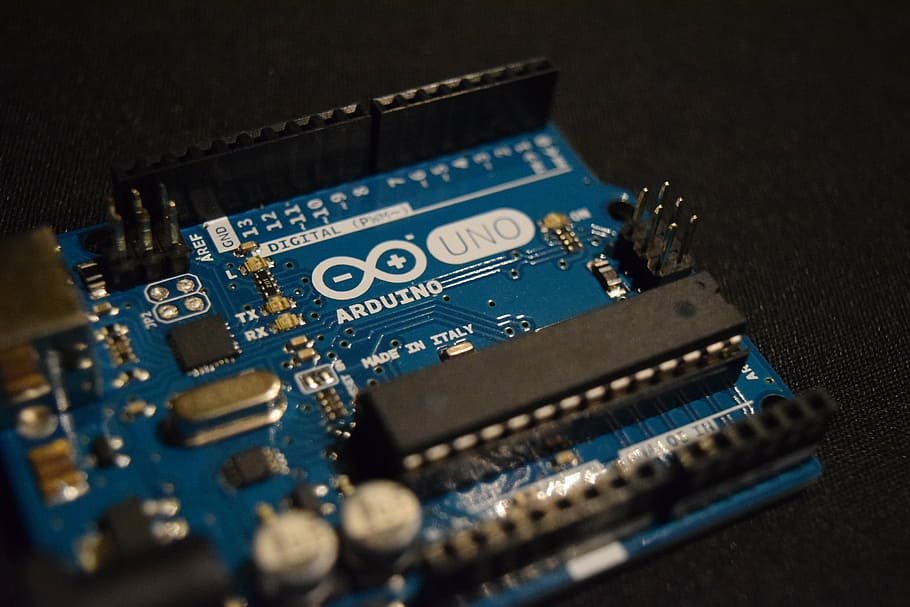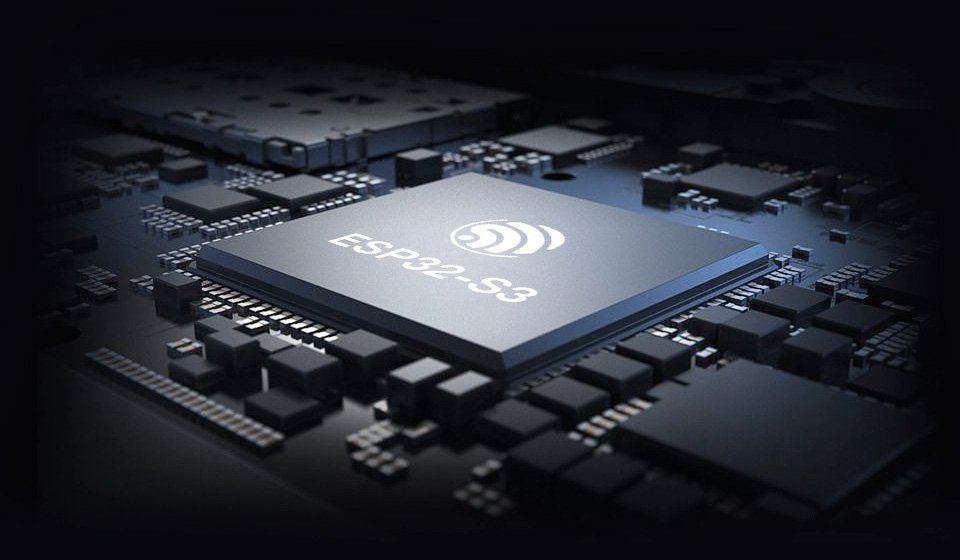It’s not easy to define what robots are, and it’s not easy to categorize them either. Each robot has its own unique features, and as a whole, robots vary hugely in size, shape, and capabilities. Still, many robots share some common attributes, making it possible to group them together. Here are 18 categories for classifying robots.
Aerospace Robots

Aerospace robots is a diverse category that includes robots that fly and robots for space applications. The SmartBird robotic seagull and the Raven fixed-wing drone are examples of flying robots. They are used to get a bird’s-eye view and capture images of a particular location. Examples of space robots include the Curiosity and Perseverance Mars rovers, and the Ingenuity Mars helicopter. There are also humanoids like NASA’s Robonaut and GITAI’s G1, which may one day help build future orbiting stations and moon bases.
Aquatic Robots

Aquatic robots aren’t afraid of getting wet. They are used to gather environmental data about the world’s oceans, perform surveillance missions, and inspect and repair infrastructure. Some of them float on the surface of water, while others dive to extreme depths. Aquatic robots include uncrewed vehicles like Saildrone, long-duration ocean robots like Wave Glider, amphibian systems like the ACM-R5H snakebite and the Aqua hexapod, and deep-sea submersibles like Aquanaut.
Autonomous Vehicles

Autonomous vehicles are robotic cars equipped with cameras, lidar, GPS, computers, and other sensing and navigation systems that enable them to drive fully autonomously. Early models include Boss and Stanley, built for DARPA’s autonomous-vehicle competitions, and also Google’s pioneering self-driving car, later spun out to form Waymo. In the United States, an increasing number of robotaxis, which passengers can hail using an app, are now operating in cities like Phoenix, Ariz., and San Francisco. There are also startups like Locomotion developing fully autonomous trucks.
Consumer Robots

Consumer robots are robots you can buy and use just for fun or to help you with tasks and chores. One of the most famous consumer robots is Roomba, which vacuums your floor autonomously. Other examples include the garden-weeding robot Tertill, mechanical pets like Sony’s Aibo robot dog, and AI-powered companions like LOVOT and Vector. Consumer robots also include a growing variety of camera drones, 3D printers, and robotic toys and kits for both beginners (like Lego sets) and advanced users (like TurtleBot).
Delivery Robots

Delivery robots transport items like food, groceries, and medical supplies from one point to another. They use cameras, GPS, and other sensors to travel autonomously, carrying their cargo in secure compartments. Starship robots drive on streets and sidewalks to bring packages to people’s homes. Relay navigates hallways and even elevators to deliver toiletries and room service to hotel guests. Another example is Zipline, whose drones fly all by themselves to distribute blood and other provisions to hospitals.
Disaster Response Robots

Disaster response robots perform dangerous jobs like searching for survivors in the aftermath of an emergency. These robots are rugged and can withstand high temperatures, moisture, dirt, and debris, and some are even radiation-proof. In 2011, after an earthquake and tsunami struck Japan, first responders deployed robots like PackBot, Kobra, and Quince to inspect hazardous areas. In addition to ground robots, aerial robots are also used in disaster relief. Regular drones can conduct search missions from high altitudes, and specialized drones like Elios can fly inside structures where it’s too dangerous for people to go.
Drones

Drones are flying robots that let you capture data and images from an elevated vantage point. Drones come in a variety of sizes and shapes. A common design, that uses four rotors to fly, is called a quadrotor or quadcopter. Other drones fly like small planes and are known as fixed-wing models. Drones also have different levels of autonomy. Some need to be operated manually via remote control, while others fly partially or fully autonomously. The most popular consumer drone is a quadrotor: DJI’s Phantom, used for aerial photography. The Phantom and other advanced drones, like Anafi and Skydio, feature autonomous flight plans to film you from different angles, and they can even track you as you move. The drones category also includes military drones, known as unmanned aerial vehicles, or UAVs, such as Global Hawk, which is used for long-duration surveillance.
Educational Robots

Educational robots include a variety of hands-on robotics modules and kits. You can find them in classrooms, STEM programs, and homes. Popular models include programmable robots like Cubelets, Dash and Dot, and Root. These robots use movement, lights, and sound to help students learn problem-solving and coding skills. The educational category also includes robotics sets from Lego, 3D printers like MakerBot, and even teacher robots like EMYS.
Entertainment Robots

Entertainment robots are designed to evoke an emotional response. They make us laugh, or feel surprise, or wonder. Among them are robot comedian RoboThespian, Disney’s theme park animatronic character Na’vi Shaman, and musically inclined bots like Partner. Flying robots are also used in entertainment, like the Lucie microdrones that execute aerial light shows, floating on stage above the performers’ heads. And sometimes, the robot itself is the main attraction: Consider the Telegarden, a work of art experimenting with robotics—and gardening.
Exoskeletons

Exoskeletons are wearable robotic suits equipped with electric motors that help move the user’s body. Some powered exoskeletons can even give the wearer superhuman strength. They work using sensors that detect when the user wants to move—to get up or walk, for example. The suit then activates the motors in a way that enables the desired motion. There are lower-body exoskeletons for helping with a user’s legs, upper-body models for the arms, and full-body suits for both legs and arms. Exoskeletons can be used for physical rehabilitation and can enable a paralyzed patient to walk again, like the Ekso and HAL robot suits. Some exoskeletons, like the Guardian XO, have industrial applications, by giving the wearer added mobility, endurance, or the capacity to carry heavy loads.
Humanoid Robots

Humanoid robots have mechanical body with arms, legs, and a head like that of a person’s, and they can often walk and manipulate objects much like we do. The robot’s body typically has a machine-like appearance, as is the case with humanoids like the friendly robot ambassador Asimo from Honda and the athletic, agile Atlas from Boston Dynamics. But humanoids can also have a human-like appearance. Examples include the Geminoid family of robots, which resemble real people. Humanoids, more than any other category of robots, have captured people’s imaginations. But while they are popular in science fiction, they remain confined to research labs, and the dream of humanoids living among us is still a distant reality.
Industrial Robots

Industrial robots perform repetitive tasks like picking, moving, and assembling parts, plus cutting, welding, painting, polishing, packaging, and other jobs typically found in manufacturing. A common type of industrial robot consists of a manipulator arm that moves fast and precisely. An example is the Unimate, the grandfather of all factory robots. Kuka’s Titan is the world’s strongest robot arm, and Omron’s Quattro is one of the fastest. There are also collaborative robots, or cobots, like ABB’s YuMi and the UR series from Universal Robots, which are safe to operate alongside human workers. In addition to manipulators, the industrial category has been expanding to include warehouse robots like Amazon’s Proteus, inspection quadrupeds like Spot and ANYmal, and even humanoids like Digit. Industrial robots are among the most common type of robot in existence. They are used in industries like automotive, electronics, machinery, plastics, chemicals, food, and others. According to one estimate, there are 3.5 million industrial robots in operation today.
Medical Robots

Medical robots are a broad category of robotic systems designed to assist people in hospitals, clinics, rehabilitation centers, and in some cases, at home. One example of a medical robot is the da Vinci surgical system, designed to be teleoperated by a physician during minimally invasive procedures. Other examples include bionic prostheses like the Johns Hopkins’ MPL, powered exoskeletons like HAL and Ekso, and the robotic wheelchair iBot. There are also therapeutic robots to help children with autism, like QTrobot, and humanoids designed to assist the elderly, like Toyota’s HSR. A system that may fit in this category but is not a robot is IBM’s Watson, the victorious Jeopardy! supercomputer, which has been used in healthcare applications.
Military & Security Robots

Military and security robots include a broad range of tough, rugged robotic systems that can perform surveillance and other missions that may be dangerous for humans to carry out. During the wars in Iraq and Afghanistan, U.S. troops used PackBot ground robots to search for improvised explosive devices, and they flew Raven drones for aerial reconnaissance. To help with logistics, the military has tested legged robots like BigDog and AlphaDog, designed to haul heavy gear, as well as autonomous uncrewed helicopters that can deliver cargo autonomously. Security robots include mobile systems that patrol offices and other private property. One example is Cobalt, which doubles as a robot receptionist and security guard.
Research Robots

Research robots are experimental machines born in universities and corporate research labs. Though these robots may be able to do useful things, and some may fit other robot categories, they’re primarily intended to help researchers do, well, research. For example, a biped like Cassie is helping roboticists understand how energy-efficient walking can be implemented in legged machines. Armar is helping German engineers design robots that can collaborate with humans in joint manipulation tasks. Bio-inspired robots like Chico and SlothBot are teaching scientists how to borrow ideas from nature to build better environmental sensors. Sometimes research robots become commercial products, but most of the time they don’t. And that’s okay, because the best thing research robots can do is show people how cool robots can be.
Service Robots

Service robots perform useful tasks like cleaning, greeting visitors, or making deliveries. Unlike industrial robots that operate in factories and warehouses, service robots work in offices, airports, museums, and shopping malls. One example is SoftBank’s Whiz, a commercial-grade vacuum robot for large spaces. Another example is the Colossus firefighting robot. Service robots also include robot receptionists like Emiew. Some delivery robots, like Relay, and some security robots, like Cobalt, can also be considered service robots.
Social Robots

Social robots are designed to interact and communicate with humans, assist us with daily tasks like grocery lists and calendar events or simply keep us company and make us smile. They do that through voice, sounds, light, screens, or an expressive face or body. In recent years, there have been several attempts at commercializing social robots. These projects include Pepper, Jibo, Kuri, and Vector. However, commercial success remains elusive. The latest crop of social robots seems to lose their appeal after the novelty wears off. And they’ve failed to show useful, unique functionalities that can’t be accomplished by a smartphone app or an AI chatbot. Still, social robotics remains a very active area of research, so expect more friendly droids to emerge from labs around the world.
Telepresence Robots

Telepresence robots allow you to be present at a place without actually going there. You log on to a robot avatar via the Internet and drive it around, seeing what it sees, hearing what it hears, and talking with people you encounter in meetings—or at the water cooler. Workers can use telepresence robots to collaborate with colleagues at a distant office, and doctors can use them to check on patients. Examples of telepresence robots include QB, Vita, Ava, Beam, and Temi.





